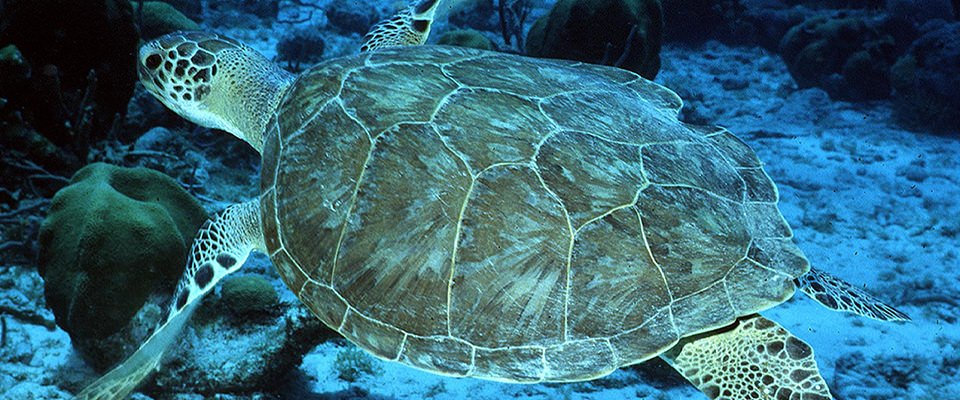What makes the green turtle...green?
The name of the green sea turtle is derived from the reptile's greenish-colored fat.

Green turtle swimming underwater.
Adult green turtles are herbivores, which means they eat only plants such as seagrasses and algae. This diet is thought to give them their greenish-colored fat, hence the name, the green turtle.
Green turtles primarily use three types of habitat – beaches for nesting, open ocean convergence zones as juveniles, and coastal areas for benthic feeding as adults. In the U.S. Atlantic and Gulf of Mexico waters, green turtles are found in inshore and nearshore waters from Texas to Massachusetts, the U.S. Virgin Islands, and Puerto Rico. In the eastern North Pacific, green turtles have been sighted from Baja California to southern Alaska, but most commonly are seen south of San Diego. Also, in the central Pacific, green turtles are found around most tropical islands, including the Hawaiian Islands.
Green turtles face a host of threats in the marine environment. Incidental capture in fishing gear is an ongoing threat to green turtles, which also affects many other marine species. Green turtles also suffer from a disease known as fibropapillomatosis in some areas of the world. The main cause of the historical, worldwide decline of the green turtle was the long-term harvest of eggs, juveniles, and adults from their nesting beaches and feeding grounds. These harvests still continue in some areas of the world, compromising efforts to recover this species.